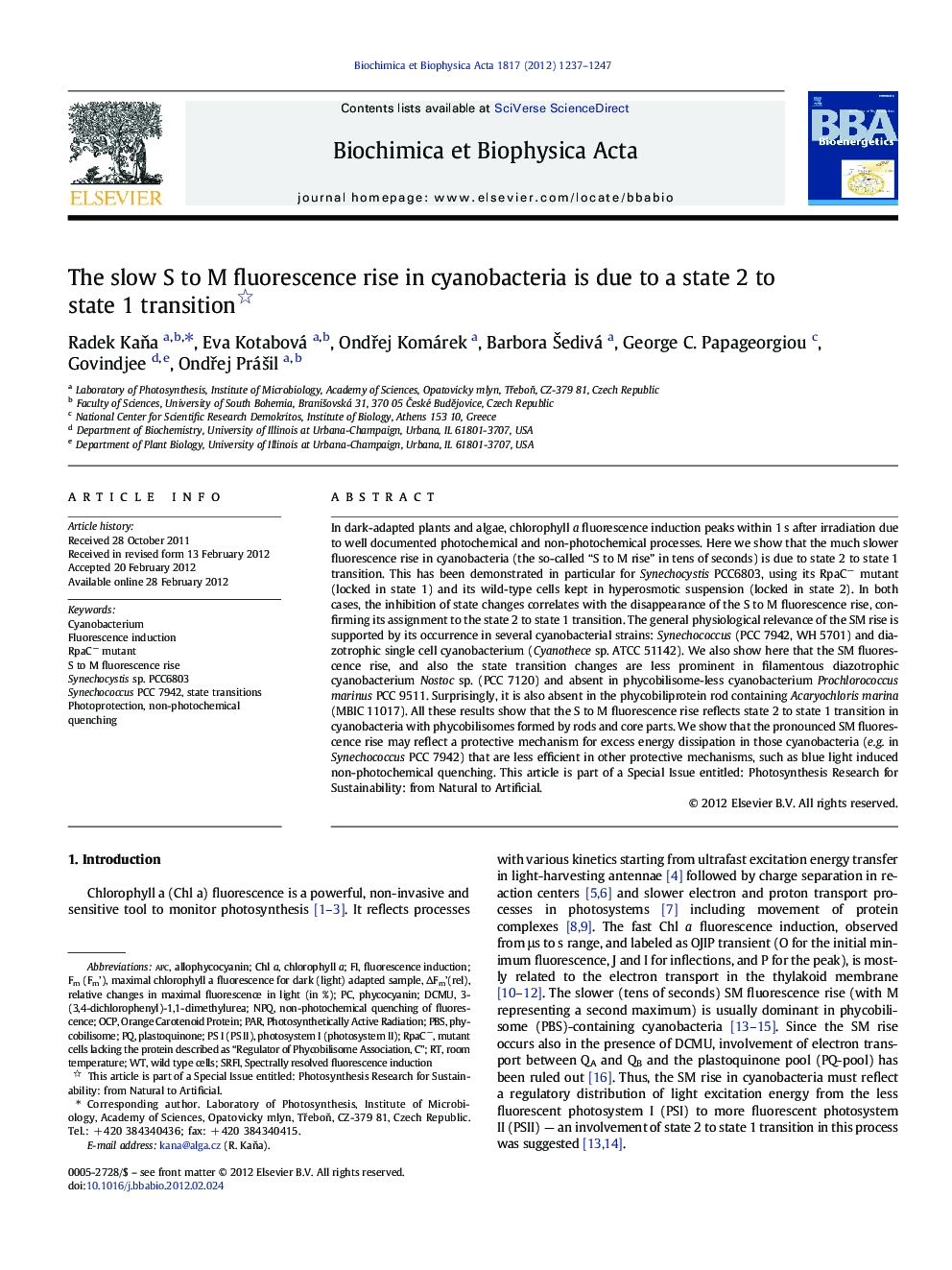| کد مقاله | کد نشریه | سال انتشار | مقاله انگلیسی | نسخه تمام متن |
|---|---|---|---|---|
| 1942394 | 1052610 | 2012 | 11 صفحه PDF | دانلود رایگان |

In dark-adapted plants and algae, chlorophyll a fluorescence induction peaks within 1 s after irradiation due to well documented photochemical and non-photochemical processes. Here we show that the much slower fluorescence rise in cyanobacteria (the so-called “S to M rise” in tens of seconds) is due to state 2 to state 1 transition. This has been demonstrated in particular for Synechocystis PCC6803, using its RpaC− mutant (locked in state 1) and its wild-type cells kept in hyperosmotic suspension (locked in state 2). In both cases, the inhibition of state changes correlates with the disappearance of the S to M fluorescence rise, confirming its assignment to the state 2 to state 1 transition. The general physiological relevance of the SM rise is supported by its occurrence in several cyanobacterial strains: Synechococcus (PCC 7942, WH 5701) and diazotrophic single cell cyanobacterium (Cyanothece sp. ATCC 51142). We also show here that the SM fluorescence rise, and also the state transition changes are less prominent in filamentous diazotrophic cyanobacterium Nostoc sp. (PCC 7120) and absent in phycobilisome-less cyanobacterium Prochlorococcus marinus PCC 9511. Surprisingly, it is also absent in the phycobiliprotein rod containing Acaryochloris marina (MBIC 11017). All these results show that the S to M fluorescence rise reflects state 2 to state 1 transition in cyanobacteria with phycobilisomes formed by rods and core parts. We show that the pronounced SM fluorescence rise may reflect a protective mechanism for excess energy dissipation in those cyanobacteria (e.g. in Synechococcus PCC 7942) that are less efficient in other protective mechanisms, such as blue light induced non-photochemical quenching. This article is part of a Special Issue entitled: Photosynthesis Research for Sustainability: from Natural to Artificial.
► S to M fluorescence rise in cyanobacteria is due to state 2 to state 1 transition.
► S to M rise is restricted to cyanobacteria with complete phycobilisomes.
► S to M rise is missing in state transition deficient RpaC- mutant of Synechocystis.
► Inability of state transition in RpaC- results in non-photochemical dissipation.
► S to M rise represent a way of excess light energy dissipation similar to NPQ.
Journal: Biochimica et Biophysica Acta (BBA) - Bioenergetics - Volume 1817, Issue 8, August 2012, Pages 1237–1247